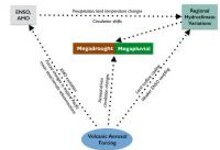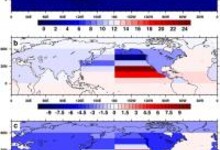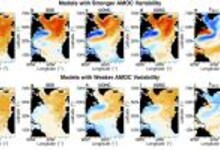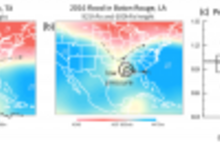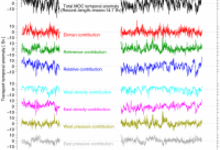Research Highlights
We aim to feature the latest research results from US scientists whose published paper features work that is sponsored by one or more sponsoring agency programs of US CLIVAR (NASA, NOAA, NSF, DOE, ONR). Check out the collection of research highlights below and sort by topic on the right. Interested in submitting an article for consideration? See our Research Highlight Submission Guidelines page for more information.
To improve estimates of risks associated with megadroughts, researchers look at improving the understanding of ENSO/AMO behavior, their teleconnections, and their response to volcanic eruptions in climate models.
Researchers found that atmospheric rivers that impact the West Coast contain more tropical moisture than average, indicating that long-distance transport of tropical moisture does occur.
Using both observations and simulations from multiple models, researchers show that most models underestimate the amplitude of low-frequency AMOC variability.
Regional model simulations suggest that post-1980 warming in both the ocean and atmosphere resulted in an estimated 20% increase of the accumulated precipitation for Hurricane Harvey.
An international team of scientists used six years of simultaneous moored observations with satellite winds to produce a new MOC volume transport record for 34.5°S in the South Atlantic Ocean.

